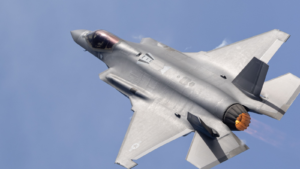
At the 2023 World Economic Forum, researchers from McKinsey forecast that the $447 billion space industry could grow to $1 trillion by 2030. However, for many investors looking for space stocks to buy starts with the question, “so what?”
That’s a perception that many industry insiders are coming to grips with. In an article for Forbes, Sherri Brunswick, COO of Space Foundation remarked “Those outside our ecosystem typically don’t have any visibility into space initiatives and, more importantly, how that translates to the betterment of life on Earth.”
The space industry was once virtually the exclusive domain of the National Aeronautics Space Administration (NASA). But in 2023, many private companies are investing in the sector to advance a range of applications including satellite launches, space travel & tourism, and space exploration.
There are space stocks to buy for every investor. Here is one large-cap leader, one micro-cap startup, and an ETF that may be the best choice for many investors.
Lockheed Martin (LMT)

Lockheed Martin (NYSE:LMT) is a good stock for investors looking to play it safe when it comes to space stocks to buy. The company is one of the leaders in the space sector particularly as it relates to satellites. With demand coming from the public and private sector, the company will have a book of work that will carry it for many years.
Currently, the company’s space business contributes approximately 18% to its top line and 15% to the bottom line. That’s a good reminder that this is far from a pure play space stock. However, at more than 16 times forward earnings, LMT stock is reasonably valued.
And investors get a quarterly dividend with a current yield of 2.82% and an impressive $12.60 annual payout per share. Lockheed Martin has also increased its dividend in each of the last 21 years which makes it a solid dividend stock for any portfolio.
Intuitive Machines (LUNR)

It’s been more than 50 years since the United States put a man on the moon. However, Intuitive Machines (NASDAQ:LUNR) is one of many companies that are leading the way back. On December 4, 2023 the company’s IM-1 mission Nova-C lunar lander arrived in Cape Canaveral, Florida.
The lander will play a critical role in NASA’s Commercial Lunar Payload Services (CLPS) initiative that is sending commercial payloads to the lunar surface as a precursor for planned human missions that could lead to a sustainable human presence. The launch could occur as soon as January 12, 2024.
Intuitive Machines will be a part of that program. The company was recently awarded a $16.8 million contract to provide lunar rover services. In its most recent earnings report, the company also reported a $135 million backlog.
Intuitive Machines is a micro-cap company with a market capitalization of just $289.61 million as of this writing. LUNR is down 58% in the last six months, and trades as a penny stock. Nevertheless, risk-tolerant investors may want to keep this on a watchlist of space stocks to buy.
SPDR S&P Aerospace & Defense ETF (XAR)

The most important action you can take when investing in any sector is to get started. With the space sector, an exchange-traded fund (ETF) will give you exposure to a wide range of companies in the sector without being overly exposed to any one of them.
There are several options to choose from, but the SPDR S&P Aerospace & Defense ETF (NYSEARCA:XAR). A total 75% of the fund’s holdings are in the Aerospace & Defense sector. This means that it’s not a pure play on the space sector. However, as you’ve seen from stocks like Lockheed Martin, many companies in the space sector are also involved in the defense sector.
The flip side of that argument is that the fund’s performance isn’t necessarily tied to funding of the defense budget. To that end the XAR ETF is up more than 18% in 2023. The fund has more than $1 billion in assets under management with an expense ratio of just 0.35%.
On the date of publication, Chris Markoch did not have (either directly or indirectly) any positions in the securities mentioned in this article. The opinions expressed in this article are those of the writer, subject to the InvestorPlace.com Publishing Guidelines.




